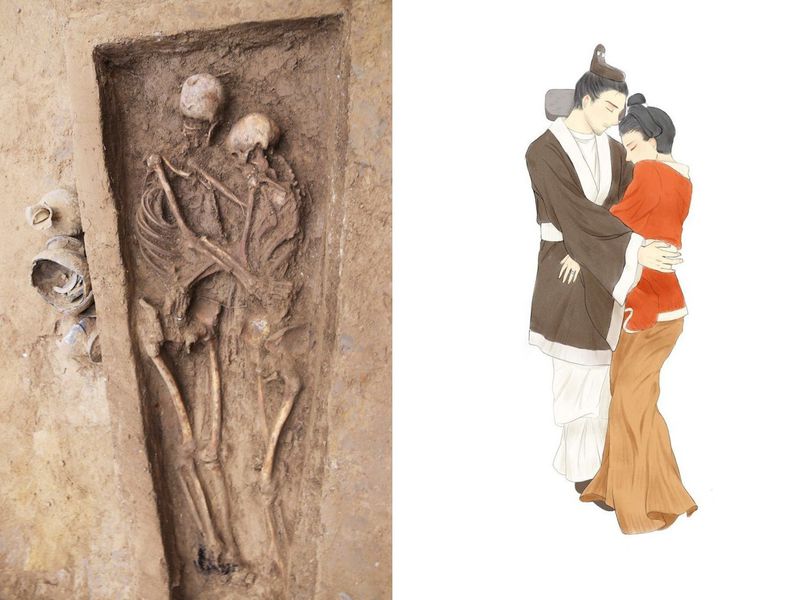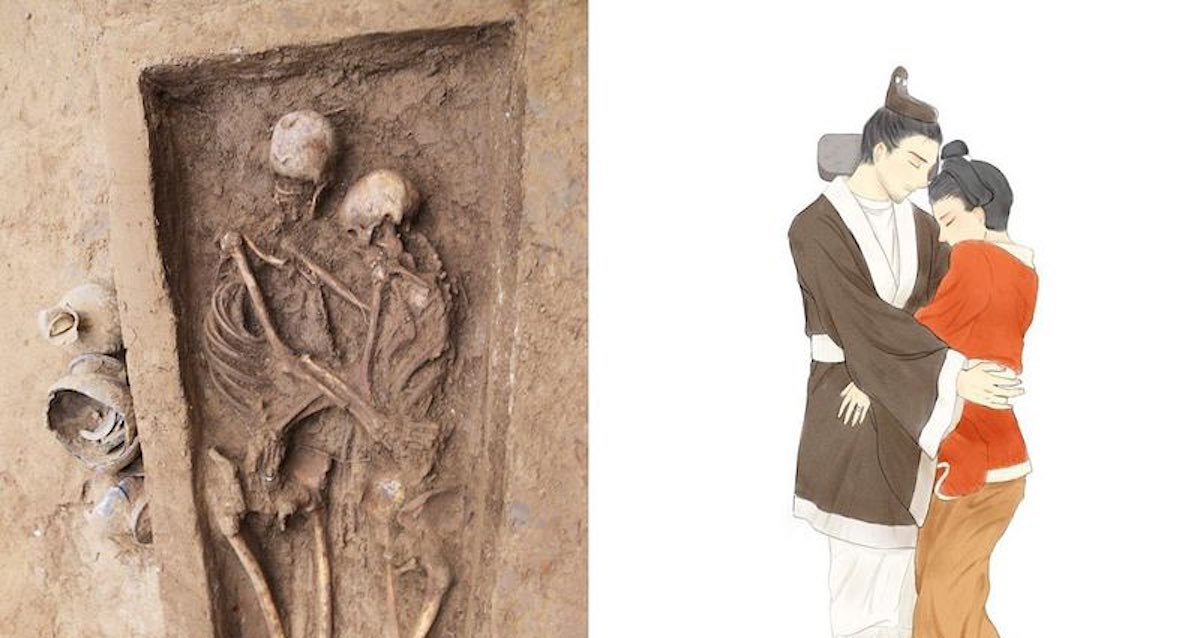“’Till death do us part,” obviously doesn’t translate into ancient Mandarin, if this archaeological discovery in China is any indication.

The skeletal remains of a couple locked in a tender embrace bears witness to the fact that in the Northern Wei Period of 4th century China, the expectation of love was that it went, quite literally, beyond the grave.
The lovers lay on their side, arms wrapped around each other’s waist, with the woman’s cheek nestled in the crook of the man’s shoulder.
Barring any phenomenal circumstances, archaeologists believe that the two were placed into their gravesite in this manner, reflecting “the desire for eternal love of the couple, and the respect to their love by people who buried them”.
As the South China Morning Post reports, the scene might conjure the end of the tragic tale of Romeo and Juliet.
With obvious signs of trauma across the male’s body, including an unhealed wound on his right arm, and a wound-less female skeleton, the archaeologists suggest the possibility that she ended her own life in a kind of sacrifice in order to be with her lover in the afterlife.
The discovery was made as part of an excavation that unearthed a cemetery in the city of Dadong, and the orientation of the grave suggests it was used by commoners.
RELATED: Archaeologists Discover ‘Dazzling’ 3,000-Year-old Egyptian City, Left ‘As if it were yesterday’
Another striking detail was the presence of a silver ring on the female’s finger—but the researchers don’t believe it had anything to do with marriage.
They think it was simply the cultures’ tendencies to think of “bringing things” with them, into the afterlife. The lack of gems or engravings meant “it probably didn’t cost very much.”
This Northern Wei period saw Chinese rulers in an abrasive relationship, like sandpaper, with the many nomadic tribes on their borders. The nomads, in this case the Tuobo People, conquered Shanxi, in the Taiyuan Province. Subsequent rulers cultivated Buddhism as a strong central faith, bringing a more concrete concept of the afterlife to the people.
“This funerary practice might have been influenced by the customs from the Western Regions and beyond through the Silk Roads,” write the authors in their corresponding scientific paper on the discovery.
“This discovery is a unique display of the human emotion of love in a burial, offering a rare glimpse of concepts of love, life, death and the afterlife in northern China during a time of intense cultural and ethnic exchange,” said co-author Qu Zhang.
SEND the Discovery to Loved Ones on Social Media…




















